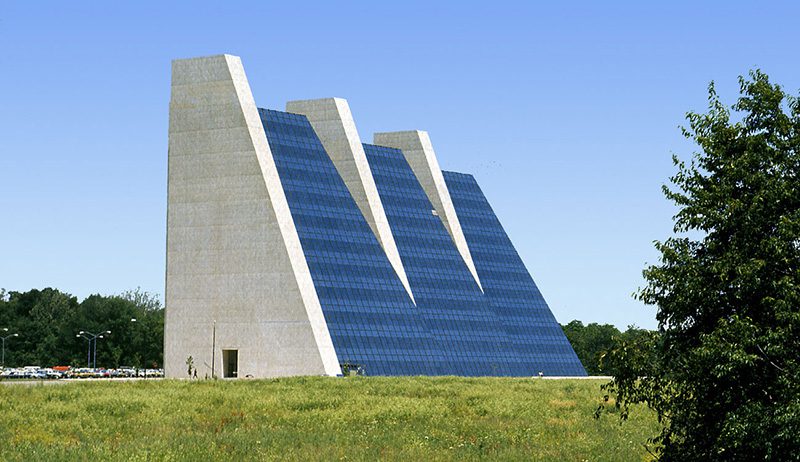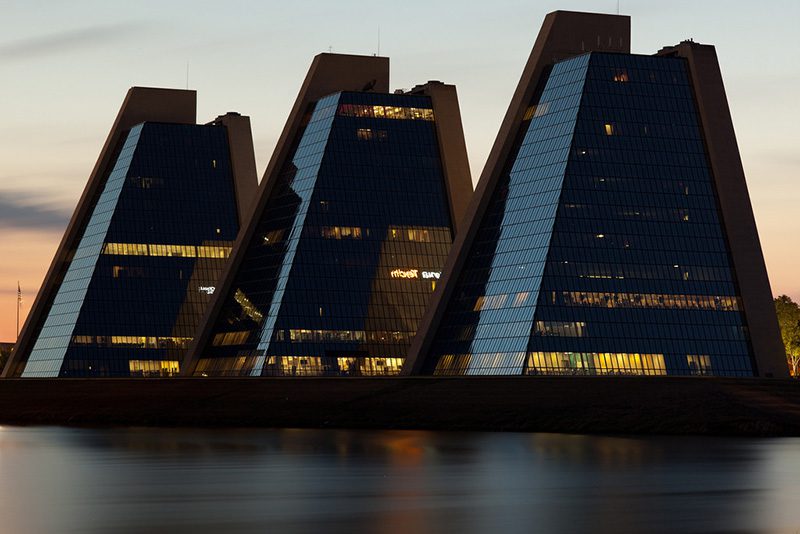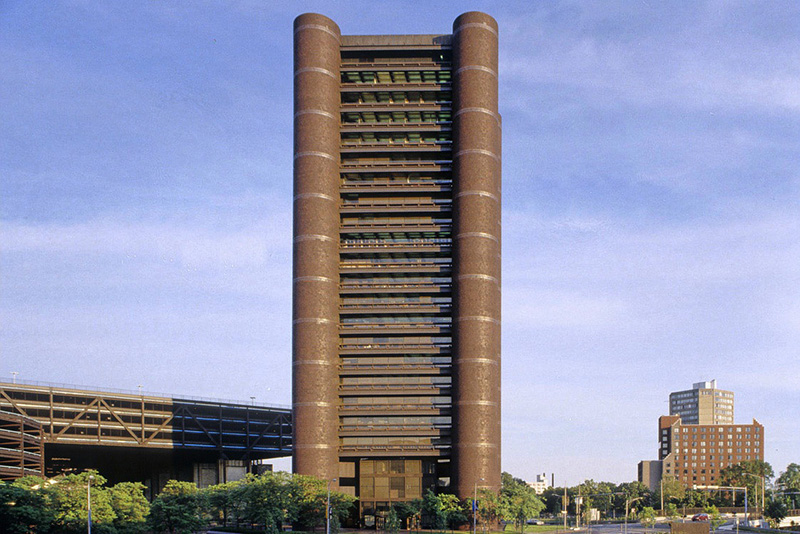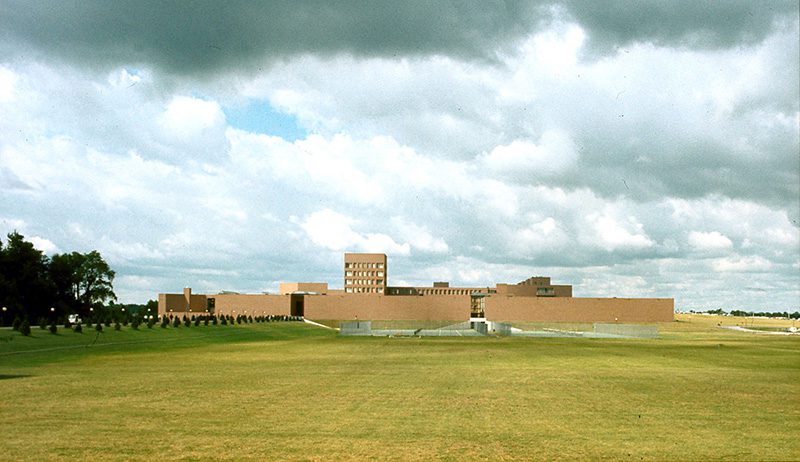ARCHITECTURE: Eamonn Kevin Roche
 Since the ‘60s, Eamonn Kevin Roche (14/6/1922-1/3/2019) has been central to the creation of a post-industrial architecture in the late 20th Century. His shadow looms large over civic and corporate architecture today, both in terms of aesthetics and ethos. Whether in the grandiose scale of High Tech or phenomenological architecture’s focus on experience, Roche’s stamp can be found. His own buildings, in the United States and abroad, stand as some of the most significant monuments to his time.
Since the ‘60s, Eamonn Kevin Roche (14/6/1922-1/3/2019) has been central to the creation of a post-industrial architecture in the late 20th Century. His shadow looms large over civic and corporate architecture today, both in terms of aesthetics and ethos. Whether in the grandiose scale of High Tech or phenomenological architecture’s focus on experience, Roche’s stamp can be found. His own buildings, in the United States and abroad, stand as some of the most significant monuments to his time.
By Efi Michalarou
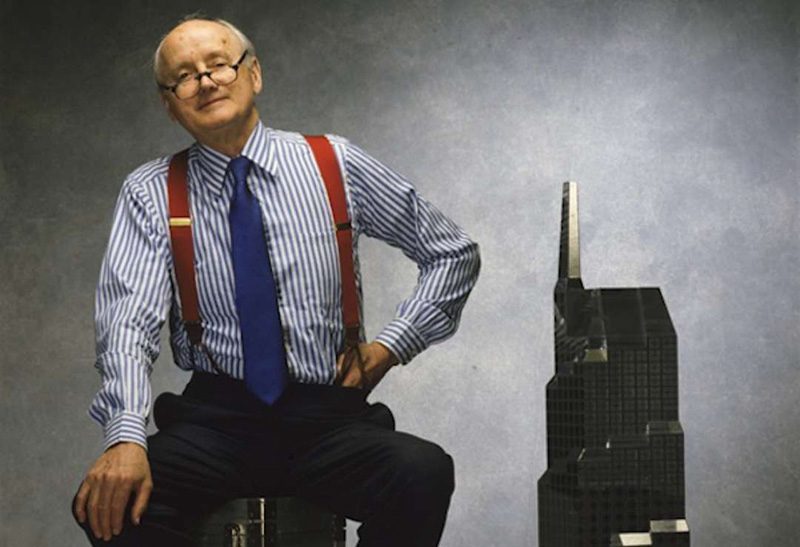 Eamonn Kevin Roche was Born in Dublin, but raised in Mitchelstown, County Cork. In 1940 enrolled at University College Dublin to study architecture. Teaching in Dublin focused on Beaux Arts and similar historicist schools of architecture, carried on from the end of the 19th Century. In 1941 Roche’s conservative professor died, and slowly he and his course mates began to discover modern architecture. Communication with the world outside Ireland was difficult, and Roche had to rely on magazines published before the war to catch a glimpse of the world being done overseas. Discovering the works of Alvar Aalto and Erik Gunnar Asplund in Scandinavia, Le Corbusier in France and Frank Lloyd Wright in America, he began to shape his own architectural vision. Roche graduated in 1945, after short-term employment with firms in Dublin and London, he did postgraduate work at the Illinois Institute of Technology in Chicago under Ludwig Mies van der Rohe. He worked briefly with the United Nations Planning Office in New York City and in 1950 joined the firm of Eero Saarinen and Associates, functioning from 1954 to 1961 as the firm’s principal associate in design. After Saarinen’s death in 1961, Roche and his future partner, John Dinkeloo (1918–81), completed Saarinen’s incomplete projects, including the Dulles International Airport terminal building near Washington, D.C. (1962), the Vivian Beaumont Repertory Theater for the Lincoln Center for the Performing Arts in Manhattan (opened 1965), and the stainless steel Gateway Arch of the Jefferson National Expansion Memorial in St. Louis, Mo. (1965). In 1966 they launched Kevin Roche John Dinkeloo and Associates. Their design approach retained some similarity to that of Saarinen in its individual examination of and response to each new project. Among the projects for which Roche and Dinkeloo are known are the headquarters of the Ford Foundation in New York City (1968), of General Foods Corporation in Rye, N.Y. (1977), of Bouygues outside Paris (1983), and of Merck & Co. in Whitehouse Station, N.J. (1993). The firm also worked for a number of American universities, designing, for example, the Zesiger Sports and Fitness Center at the Massachusetts Institute of Technology in Cambridge (2002) the Helen and Martin Kimmel Center for University Life at New York University in New York City (2003) and numerous buildings on the campus of the Rochester Institute of Technology in New York. Roche was the recipient of numerous honours, including the Pritzker Prize in 1982, the Gold Medal Award from the American Academy of Arts and Letters in 1990, and the AIA Gold Medal in 1993. From 1994 to 1997 he served as president of the American Academy of Arts and Letters.
Eamonn Kevin Roche was Born in Dublin, but raised in Mitchelstown, County Cork. In 1940 enrolled at University College Dublin to study architecture. Teaching in Dublin focused on Beaux Arts and similar historicist schools of architecture, carried on from the end of the 19th Century. In 1941 Roche’s conservative professor died, and slowly he and his course mates began to discover modern architecture. Communication with the world outside Ireland was difficult, and Roche had to rely on magazines published before the war to catch a glimpse of the world being done overseas. Discovering the works of Alvar Aalto and Erik Gunnar Asplund in Scandinavia, Le Corbusier in France and Frank Lloyd Wright in America, he began to shape his own architectural vision. Roche graduated in 1945, after short-term employment with firms in Dublin and London, he did postgraduate work at the Illinois Institute of Technology in Chicago under Ludwig Mies van der Rohe. He worked briefly with the United Nations Planning Office in New York City and in 1950 joined the firm of Eero Saarinen and Associates, functioning from 1954 to 1961 as the firm’s principal associate in design. After Saarinen’s death in 1961, Roche and his future partner, John Dinkeloo (1918–81), completed Saarinen’s incomplete projects, including the Dulles International Airport terminal building near Washington, D.C. (1962), the Vivian Beaumont Repertory Theater for the Lincoln Center for the Performing Arts in Manhattan (opened 1965), and the stainless steel Gateway Arch of the Jefferson National Expansion Memorial in St. Louis, Mo. (1965). In 1966 they launched Kevin Roche John Dinkeloo and Associates. Their design approach retained some similarity to that of Saarinen in its individual examination of and response to each new project. Among the projects for which Roche and Dinkeloo are known are the headquarters of the Ford Foundation in New York City (1968), of General Foods Corporation in Rye, N.Y. (1977), of Bouygues outside Paris (1983), and of Merck & Co. in Whitehouse Station, N.J. (1993). The firm also worked for a number of American universities, designing, for example, the Zesiger Sports and Fitness Center at the Massachusetts Institute of Technology in Cambridge (2002) the Helen and Martin Kimmel Center for University Life at New York University in New York City (2003) and numerous buildings on the campus of the Rochester Institute of Technology in New York. Roche was the recipient of numerous honours, including the Pritzker Prize in 1982, the Gold Medal Award from the American Academy of Arts and Letters in 1990, and the AIA Gold Medal in 1993. From 1994 to 1997 he served as president of the American Academy of Arts and Letters.


